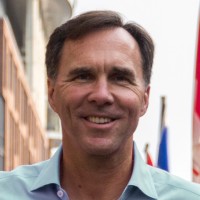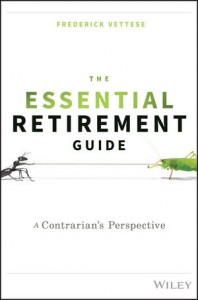
As the Tuesday papers reported, the middle-class tax cut and lower annual TFSA contribution limits kick in as of Jan. 1 2016. As the FP’s Garry Marr wrote Tuesday I suppose we can be grateful the Liberals didn’t cut the TFSA program altogether and it could have been worse: they might have cancelled out the “bonus” $10,000 TFSA room we received in 2015. A truly churlish move might have been to allow only $500 in 2016, although the administration nightmares and hordes of angry voters — 11 million of them have TFSAs and more than half liked the higher limits — would surely have created a backlash.
The other tiny bit of silver lining is that the $5,500 limit is again linked to inflation (the $10,000 limit was not), so we can at least hope that the limit will eventually rise to $6,000 and beyond if inflation rises in earnest. Of course, that will be another problem.
In any case, as the Hub showed on Tuesday, the Working Canadians petition is now live at https://petitions.parl.gc.ca, after Conservative MP Peter Kent (Thornhill) sponsored Catherine Swift’s petition. It will be up until early April. After just a week, it has just under 3,000 signatures, on top of the 7,000 from the earlier Working Canadian petition. See also my FP piece that day: TFSA cancels out benefits of ‘middle class’ tax cuts, critics warn.
I find it interesting that those of us who support the petition all tend to be 60-plus and still working. That applies to Catherine and Peter, though I’m not sure about Bill Tufts, who also wrote a Hub blog on the topic as it relates to pension parity.
The two-tiered society

I actually had a bad cold all week and had to force myself to continue working. It occurred to me that this was a stark contrast to recent news stories about how many extra sick days public-sector workers take, especially on Mondays and Fridays in the summer.
Couple that phenomenon with the disparity between public-sector and private-sector pensions and it’s clear we have a two-tiered society: those in the public sector who take plenty of paid vacations and sick days and who can retire in their late 50s; and those in the private sector who keep toiling well into their 60s and are reluctant to stop working even when they’re sick. (which is what I am as I write these words: hope it doesn’t show!).
As Tufts argued a few weeks ago here at the Hub, the TFSA is just mechanism that at least gives this underprivileged class a shot at financial independence. Those of us without inflation-indexed DB pensions backed by taxpayers must make do with our RRSPs and TFSAs but we continue to be stymied by “financial repression” — seemingly eternal low interest rates that force you in turn to take more risk than you’d like in the equity markets.
The Essential Retirement Guide
 But enough about the TFSA. Last weekend I reviewed Fred Vettese’s excellent new book, The Essential Retirement Guide. (click for link to Amazon entry).
But enough about the TFSA. Last weekend I reviewed Fred Vettese’s excellent new book, The Essential Retirement Guide. (click for link to Amazon entry).
The review can be found by clicking on this title: The Essential Retirement Guide is a bold claim but the book largely lives up to its title. Ironic that his co-author on his earlier book, The Real Retirement, is finance minister Bill Morneau. I have to believe that Morneau is well aware of the benefits of larger TFSA contribution room but obviously he has to toe the line with the Liberal party and its leader. At the book launch a week ago, Fred told me the unsurprising fact that Morneau’s ascent has stimulated a resurgence in the sales of the original book.
But the good news is that Vettese believes you only need to replace 50% of your working income to live well in retirement, rather than the 70 to 80% the financial industry often promotes. If this emboldens people to retire a little earlier, they may welcome the slightly lower taxes on their likely lower retirement incomes: instead of paying the new higher taxes on incomes above $200,000, I’d expect many will have retirement incomes squarely in the band of the middle-class tax cut from 22% to 20.5% on incomes between $44,000 and $90,000.
Using ETFs to hedge equity risk
Going back to Financial Repression and puny interest rates, I mentioned earlier that this has forced many near-retirees and those already in the Retirement Risk Zone to take more risk than they may with to by raising exposure to equities. But there are ways to deal with this extra risk: see another of my pieces that ran in the FP on Tuesday was titled How ETFs can be used to hedge downside risk.

